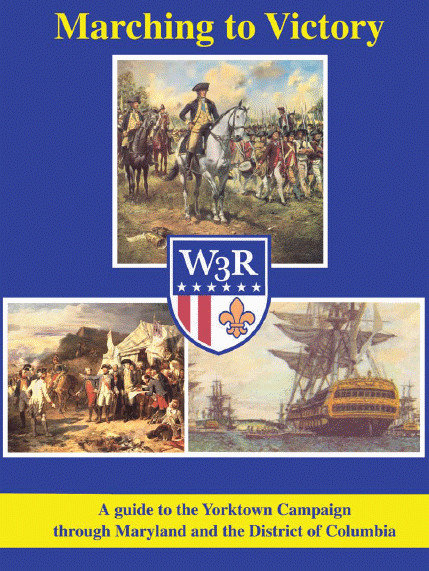The W3R® of Maryland
|
General information contact: Robert Reyes at
reyeser@hotmail.com
To join the W3R®-MD contact: Robert Reyes at reyeser@hotmail.com W3R®-MD Board of Directors
Maryland and DC Affiliates
|
W3R®-MD ActivitiesIn 2001 January the Maryland SAR published a booklet (see cover below) entitled "Marching to Victory -- a 56-page guide to the Yorktown Campaign through Maryland and the District of Columbia", with a description of the route and photographs of historic homes along the route. This was updated in 2007; the latest version is posted here: "Marching to Victory" -- 2007 Nov version [a 2 Mb PDF file] "Marching to Victory" -- 2007 Nov version [a 2 Mb PDF file]
To order a printed copy visit www.typestylesdp.com and use the Contact Us link to send an e-mail request for purchase. The 2013 price is $37.80, including shipping and Maryland sales ta.
Photos of Maryland's historic roadside markers are being posted on the Web site of Maryland's Dept. of Transportation. |
For activities, see the Events link on the W3RĘ-US site

